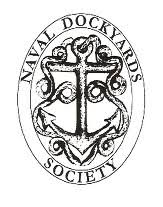About these videos
From Yards to Hards: Preparing Allied naval forces for the 1944 Normandy Landings
How were UK and overseas naval establishments occupied in constructing, supplying, and transporting harbours and pipelines?
The Allied assault on German-occupied France on and after D-Day (6 June 1944) was only possible through naval support, from the largest warships and merchant vessels through to the smallest landing craft. Existing dockyards, harbours and shipyards in the UK, the US, Canada and Bermuda played a vital role in building, preparing, maintaining and repairing the Allied fleets. Remains of these coastal installations survive as tangible heritage of this endeavour.
However, the magnitude of the projected naval and land forces required many more temporary bases and facilities, which entailed systematic forward planning. The roles of these establishments included supporting landing craft flotillas, building Mulberry Harbours, embarking troops and supplies, and supplying fuel via the PLUTO pipeline. Workforces were dedicated to planning, victualling and furnishing all kinds of supplies. Personnel went through an equivalent period of training and preparation. Nine speakers addressed these themes.

About the Naval Dockyards Society
The Naval Dockyards Society was inaugurated in 1996 and officially constituted in 1997 at the National Maritime Museum, Greenwich. The Society’s primary aim is to stimulate the production and exchange of information and research into naval dockyards and associated organisations. It runs annual themed conferences, publishes conference papers in annual Transactions; conducts annual tours to the UK and overseas sites and has carried out campaigns to preserve dockyard sites at Sheerness, Deptford, Devonport, Gibraltar and Bermuda. The NDS is supported by the National Maritime Museum, Greenwich.
The Naval Dockyards Society is an international organisation which is concerned with and publishes material on naval dockyards and associated activities, including victualling, medicine, ordnance, shipbuilding, shipbreaking, coastguard stations, provisions and supplies; all aspects of their construction, history, archaeology, conservation, workforce, surrounding communities and family history; and all aspects of their buildings, structures and monuments relating to naval history. The Society is therefore involved closely in the terrestrial and underwater heritage of all these sites.
You can read about its history in J D Davies (2012) ‘The Naval Dockyards Society: the first fifteen years‘ in Defence Sites: Heritage and Future C Clark and C A Brebbia (eds) Transactions on the Built Environment Wessex Institute of Technology Volume 123 pp. 3-14 www.witpress.com ISSN 1743-3509










